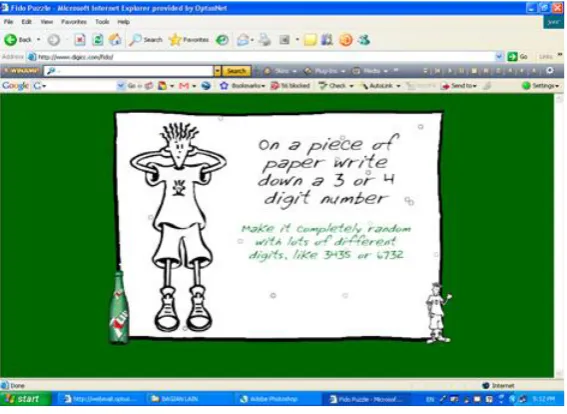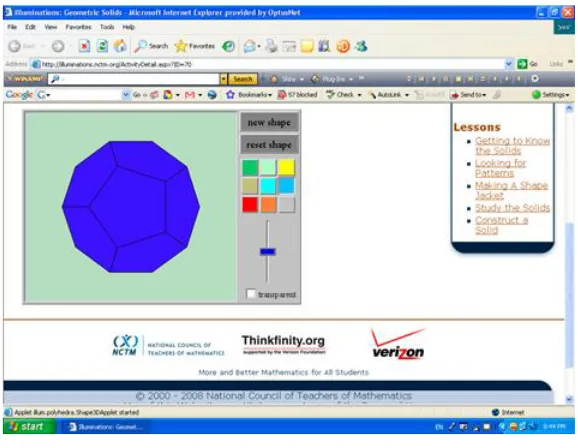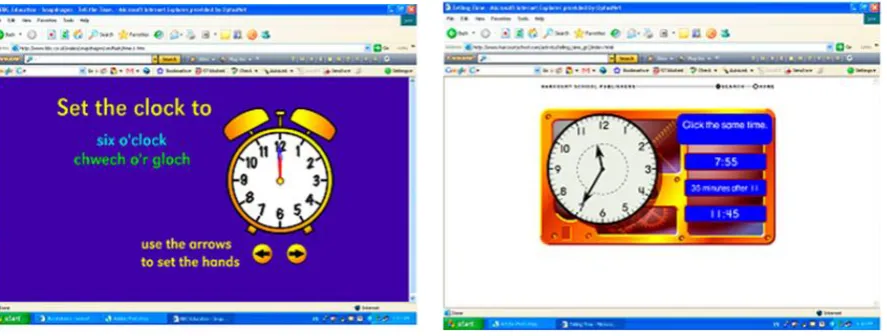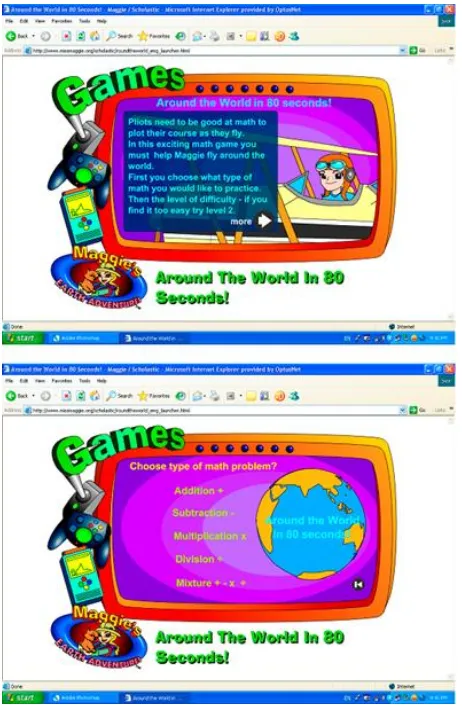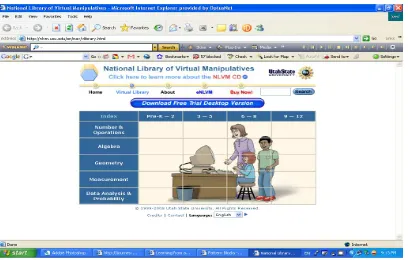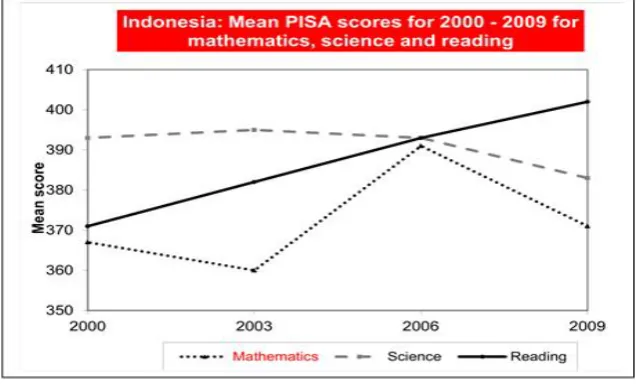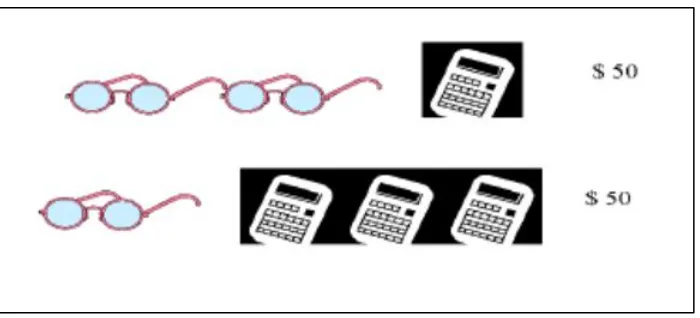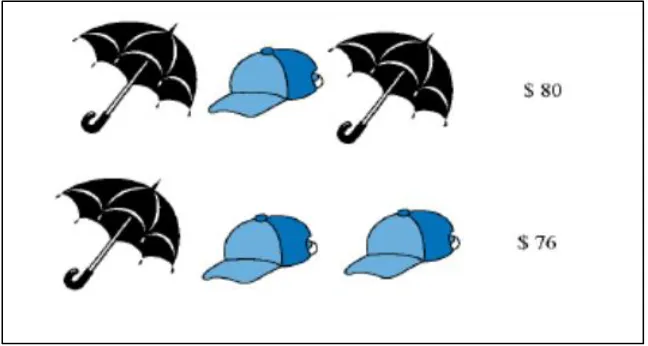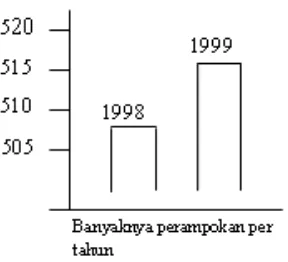VOLUME 3, NO. 1 DECEMBER 2013 ISSN 2089-4716
Southeast Asian Ministers of Education Organization (SEAMEO)
Regional Centre for Quality Improvement of Teachers and Education Personnel (QITEP) in Mathematics situated in Yogyakarta Indonesia
i
Southeast Asian Mathematics Education Journal – SEAMEJ
DescriptionofSouth East AsianMathematics Education Journal (SEAMEJ)
South East Asia Mathematics Education Journal (SEAMEJ) is an academic journal devoted to reflect a variety of research ideas and
methods in the field of mathematics education. SEAMEJ aims to
stimulate discussions at all levels of mathematics education through significant and innovative research studies. The Journal welcomes articles highlighting empirical as well as theoretical research studies, which have a perspective wider than local or national interest. All contributions are peer reviewed.
SEAMEO QITEP in Mathematics aim tos publishSEAMEJtwicea year, inJuneandDecember.
Contact Information: Professor Dr. Subanar
The Director of SEAMEO QITEP In Mathematics Jl. Kaliurang Km. 6, Sambisari, Condongcatur, Depok
Sleman, Yogyakarta, Indonesia. Phone: +62(274)889987
Fax: +62(274)887222 Email: qitepinmath@yahoo.com
v
Editorial Board Members
Wahyudi SEAMEO QITEP in Mathematics
Widodo PPPPTK Matematika Yogyakarta
Ganung Anggraeni PPPPTK Matematika Yogyakarta
Fadjar Shadiq SEAMEO QITEP in Mathematics
Pujiati SEAMEO QITEP in Mathematics
Sahid SEAMEO QITEP in Mathematics
Anna Tri Lestari SEAMEO QITEP in Mathematics
Punang Amaripuja SEAMEO QITEP in Mathematics
Manuscript Editors
Sriyanti SEAMEO QITEP in Mathematics
Siti Khamimah SEAMEO QITEP in Mathematics
Rachma Noviani SEAMEO QITEP in Mathematics
Marfuah SEAMEO QITEP in Mathematics
Luqmanul Hakim SEAMEO QITEP in Mathematics
Mutiatul Hasanah SEAMEO QITEP in Mathematics
Tri Budi Wijayanto SEAMEO QITEP in Mathematics
Wahyu Kharina Praptiwi SEAMEO QITEP in Mathematics
Administrative Assistants
Rina Kusumayanti SEAMEO QITEP in Mathematics
Rini Handayani SEAMEO QITEP in Mathematics
Cover Design & Typesetting
Joko Setiyono SEAMEO QITEP in Mathematics
Suhananto SEAMEO QITEP in Mathematics
Eko Nugroho SEAMEO QITEP in Mathematics
Tika Setyawati SEAMEO QITEP in Mathematics
Febriarto Cahyo Nugroho SEAMEO QITEP in Mathematics
International Advisory Panels
Mohan Chinnapan University of South Australia
Philip Clarkson Australian Catholic University
Lim Chap Sam Universiti Sains Malaysia
Cheah Ui Hock SEAMEO RECSAM Malaysia
Noraini Idris Universiti Pendidikan Sultan Idris, Malaysia
Paul White Australian Catholic University
Parmjit Singh Universiti Technology Mara Malaysia
Michael Cavanagh MacQuarie University Australia
Jaguthsingh Dindyal Nanyang University Singapore
Chair
Subanar SEAMEO QITEP in Mathematics
Chief Editor
Allan Leslie White & Wahyudi 1 Editorial
Sitti Maesuri Patahuddin 3 Joyful And Meaningful Learning In Mathematics Classroom Through Internet Activities
Zulkardi 17 Designing Joyful And Meaningful New School Mathematics Using Indonesian Realistic Mathematics Education
Robin Averill 27 Enjoying Maximising Opportunties For Learning Mathematics
David Nutchey 39 A Model Eliciting Framework For Integrating Mathematics And Robotics Learning
Allan Leslie White 55 Mathematics Education Research Food For Thought With Flavours From Asia
CONTENTS
1 Editorial
This is the third edition of the South East Asian Mathematics Education Journal (SEAMEJ) which is an academic journal devoted to publishing a variety of research studies and theoretical papers in the field of mathematics education. SEAMEJ seeks to stimulate discussion at all levels of the mathematics education community. SEAMEJ aims to eventually publish an edition twice a year, in June and December.
SEAMEJ is supported by the Southeast Asian Ministers of Education Organization (SEAMEO), Centre for Quality Improvement of Teachers and Education Personnel (QITEP) in Mathematics situated in Yogyakarta Indonesia. Launched on July 13, 2009, there are now three QITEP SEAMEO Centres for Quality Improvement of Teachers and Education Personnel in Indonesia. One centre is in Mathematics (Yogyakarta), one in Science (Bandung) and one in Languages (English - Jakarta).
The first edition was produced using revised papers from the first International Symposium of QITEP Mathematics in November 2011, where a number of paper presenters were approached to submit their reworked papers to this journal. In this issue we are proud to state, are papers that have been submitted by researchers from a number of countries. We hope that trend this will continue and swell as the journal becomes widely read and enable us to meet our aim of two editions in one year.
The second issue reflected the variety and richness of the Asian region with papers covering a wide range of issues and perspectives such as mathematics teaching in Shanghai China; a longitudinal study of Australian transition years and school student engagement; a further elaboration of bibliotherapy with a framework for use with pre-service teachers; a report on a professional learning workshop using a computer adaptive assessment program; and, the implications that brain research has for the teaching and learning of mathematics.
In this issue we present papers that were subjected to a blind review process by the International Review Panel and we are thankful to the panel for their continued support. While these papers come from a variety of countries and cover different aspects of teaching and learning, there seems to be a common theme of joyful and meaningful learning which is highlighted in the first two papers from Indonesian researchers.
As we are still refining our processes, we wish to apologise if we have made errors or omissions. We welcome feedback and suggestions for improvement, but most of all, we welcome paper contributions.
The Journal seeks articles highlighting empirical as well as theoretical research studies, particularly those that have a perspective wider than local or national interests. All contributions to SEAMEJ will be peer reviewed and we are indebted to those on the International Advisory Panel for their support.
3
Joyful And Meaningful Learning In Mathematics Classroom Through
Internet Activities
mathematics teaching as well as for professional development. This paper illustrates three main categories of the potential of the Internet for learning: the Internet for information, the Internet for communication, the Internet for collaboration, followed by a description on how the use of the Internet could make learning mathematics interesting and meaningfully. Lastly, through the use of a case study and my experiences working with group of students using the Internet, I argue that the success of integrating the Internet into mathematics teaching and learning depends very much on teachers’ knowledge and their philosophical beliefs about learning and teaching, learners, mathematics, and technology.Keywords: Internet for communication, Internet for collaboration, Internet for learning, meaningful learning,
teacher knowledge, beliefs.
Introduction
The genesis of my investigation about Internet for learning came firstly from my personal experiences. I found that the Internet had been a significant medium to achieve my objectives, namely to improve my qualities as a lecturer, a researcher, and a facilitator for mathematics teachers. This was primarily because in a situation where I lacked learning resources (e.g., current books and journals), the Internet enabled me to find many valuable resources, and even allowed me to communicate with several experts in other countries (e.g., sharing teaching and learning experiences, asking for online references). It has been meaningful and joyful learning experiences for me. This has motivated me to encourage others to take advantages from the accessibility of the Internet (see e.g., Ernawati & Patahuddin, 2009; Patahuddin, 2007; Patahuddin & Rokhim, 2009; Patahuddin, Rokhmah, & Nur, 2010; Rokhim & Patahuddin, 2010; Rokhmah, Patahuddin, & Nur, 2010). This paper focuses on the potential of the Internet as a tool for meaningful and joyful mathematics learning.
What Is The Internet And Its Potential?
The Internet is not one place or one company. It is a descriptive term for a web of
thousands of interconnected broad-band and narrow-band telephone, satellite, and wireless networks built on existing and planned communication technology. This infrastructure is a network of networks, reaching out and connecting separate islands of computer, telephone, and cable resources into a seamless web (Gattiker, 2001; p. 3).
4
information, the Internet for communication, the Internet for collaboration. All these can be linked to mathematics education and has the potential advantages and limitations of the Internet in enhancing mathematics teaching and learning.
The Internet for Information
A wide range of information can be found through the Internet such as information from online books, atlases, newspapers, journals, magazines, dictionaries, radio or television programs, and so on. The Internet, supported by multimedia and good networks, can have multiple functions, for instance, serving as a radio, as a television, as a video, as well as a virtual visiting speaker. The Internet has opened broad opportunities for more communities to access information relatively instantly, regionally, nationally, and internationally. The Internet has also become increasingly familiar to more and more people due to its user-friendliness. Unfortunately, because nobody owns the Internet, anybody is able to post reliable, but also non-reliable information via the Internet. Through the Internet, users can be provided, not only with up-to-date information, but also out-of-date information. Internet users must also be aware of its instability, as information that is available now can be unavailable at any time in the future.
The literature has identified the Internet as a source of information, highlighting potential advantages and disadvantages for educational purposes. For example, Glavac (2004) described three useful websites for teachers and students, that may even be useful for parents, that contain many different educational topics on different subjects, including mathematics. One of the websites has been created by teachers for teachers. Engelbrecht and Harding (2005), in their attempt to classify mathematical sites on the Internet for undergraduate students, have also provided several examples of sites for mathematical enrichment, mathematical visualisation, sites that provide mathematical exercises for practice, quizzes, Olympiad questions, as well as information about full-online courses from a range of universities. Byerly and Brodie (2004) have provided a list of almost thirty mathematical websites, providing a brief description of their contents. Ameis and Ebenezer (2000) have written a book entitled “Mathematics on the Internet, A resource for K-12 Teachers”, which includes practical information about using the Internet, a discussion on how mathematics learning can be facilitated via the Internet, and which also provides links to mathematical teaching resources and sites for professional development.
The Internet for Communication
5
and so on. The Internet as a communication tool is distinct from other forms of communication, such as the telephone, telegram, air mail, or face-to-face communication as users are able to send or receive messages relatively instantly and are able to send messages simultaneously to recipients around the globe. Recipients of messages can also benefit from this flexibility because they are able to check their e-mail or participate in discussion forums anytime, anywhere. All these features have opened opportunities to build up learning communities among Internet users from all over the world. However, these positive features can be outweighed by negative features, such as making users vulnerable to receiving harmful messages from unknown senders.
Engelbrecht and Harding (2005) have described sites (e.g., Math Forum) which enable users to share ideas, ask mathematics questions or get answers to mathematic problems, and access links to mathematical resources. Newell, Wilsman, Langenfeld, and McIntosh (2002) described how mathematics teachers from distant areas are communicating with other teachers instantly via the Internet instead of waiting for face-to-face communication at conferences. Further, Frid (2002) described how students benefited from communicating mathematical ideas with other students from different schools in different countries.
The Internet for Collaboration
Collaboration usually involves more than one person, or a group, working together to achieve particular goals. It requires communication between members and usually requires all members to be present at a site at some point. Lack of communication among members will inhibit the effectiveness of collaboration. With the Internet, communication has become increasingly easier, cheaper and even more effective. By using the Internet, people at a distance are able to undertake a project together in a virtual site. Thus, the Internet has clearly opened many opportunities to enable people from all over the world to collaborate.
Chausis (2002), a technology trainer, presents her ideas about tele-collaboration, that is by using the Internet tools and online resources to work together with people in different places. She introduces several Listserv resources, websites that provide opportunities for teachers to interact with other teachers via the Internet, and provide more specific websites to support collaboration between teachers for classroom activities such as TeacherLine, NickNacks Telecollaboration, to-Teacher Collaboration, and so on. In the Teacher-to-Teacher Collaboration website, a great number of websites can be found that provide opportunities for teacher professional development.
6
boards, online conferences, gated conferences and so on, as well as by involving participants in discussions, group projects, and group papers.
Generally speaking, it has been widely accepted that the Internet has advantages and disadvantages as a source of information, as a medium of communication and as a site for collaboration. The rapid growth of the Internet should motivate researchers or educators to explore ways to optimise the use of the Internet for teaching and learning.
Internet Activities for Joyful and Meaningful Mathematics Learning
Several important questions are how Internet technology can assist teaching and learning to enable students to learn mathematics joyfully and meaningfully? What mathematical websites that are feasible to use for this purpose? This section, is trying to answer those questions.
The Internet can assist in supporting individual learning needs as well as assist learners in developing skills and knowledge. The Internet provides opportunities for students to engage with more dynamic forms of mathematics with multi-representations of mathematics concepts than those traditionally displayed in textbooks (see for example in http://illuminations.nctm.org; http://www.beenleigss.eq.edu.au). The role of knowing different representation of a particular concept in mathematics is to enhance conceptual understanding (Alagic, 2003; Crawford & Evelyn, 2003) and this means potentially meaningful for learners (Wiske, Sick, & Wirsig, 2001). As a result, teachers need to be aware of the influence these different representations have on the way students decode information. Crawford & Evelyn (2003, p. 172) argues that:
Digital manipulatives can be appropriately and successfully integrated into a mathematical learning environment through the use of web-based materials. [this use] provides an interactive environment with immediate feedback to explore indepth mathematical theories that would be difficult to stimulate with concrete models. Additionally, younger students are able to “see” (conceptualize) concepts that would normally be regulated to indepth abstract mathematical principles.
Moor and Zaskis (2000) found that “the interactive aspect of the Internet holds the attention of the student much longer than a regular page of information such as is found in a textbook (p. 103). They also found that words expressed by 25 of 36 students to describe their experiences in using the Web, are such as “fun”, “exciting”, entertaining”, “interesting”. Loong’s study (2012) also “points to the potential of the Internet to motivate students. Interactive web objects that animate or can be virtually manipulated, and provide feedback to students seem to engage and motivate students” (p. 358). This finding indicates that students found using the Web to learn mathematics motivational. In other words, this is potentially joyful for learners.
7
communicating ideas with others, finding research on mathematical ideas, exploring lesson ideas, and also for accessing to community resources and excursion activities. In the following paragraphs, I briefly describe several websites in terms of what they look like, the mathematical concepts involved and how these activities engaged the students joyfully and meaningfully.
Fido Puzzle
The Fido puzzle (Figure 1) is an interactive game where the computer will “read the user’s mind” (see http://www.digicc.com/fido/). In this game, the Internet users need to click through screens that instruct them, first to write down a 3 or 4 digit numbers, then to jumble the digits to make another number. Then they are instructed to subtract the smaller number from the larger one. Next, they are asked to draw a circle around one of the digits in their answer without letting the computer “see” the answer. Finally the Internet users are instructed to jumble the answer and type the number into the computer, excluding the number they circled. The computer then gives them the number they circled.
Figure 1. A page from Fido Puzzle website
8 Geometry
The geometry website (http://illuminations.nctm.org/) in figure below, which is provided by National Council of Teachers of Mathematics (NCTM, 2005), allows students to explore the properties of various geometric solids, such as the number of faces, edges, and vertices. The teacher can also formulate his/her own questions to suit the students’ age and ability. This website was used by students in one classroom I studied in Australia through rotational activities and a group of students in Surabaya. This website was used to assist students to look at the features of different geometrical shapes and finding relationship between their components.
My experiences observing or working with students using this website, I found that students could easily navigate this website. It was a tool for students to observe different solid shapes since it allowed students to turn around the solid, to colour the faces of three dimensional figures. It appears to me that this “manipulatives website” is potential to develop students’ mathematical thinking compared to the uses of physical models and the printed visual model. I also found from my observation in an Australian class and Indonesian groups of students that the students appeared to be on task and engaged in their learning joyfully and meaningfully using this geometric website.
Figure 2. A page from Geometry website
Learning about time
9
1, the times were set at either the hour or the half hour. In Level 2, the times were set at either half hour or at quarter hourly intervals. In Level 3, the times were in five minute intervals.
Figure 3. A page from a website “Stop the clock”
I also found other games such as “Set the Clock” (Figure 4) in which the user has to click the arrow to demonstrate on a clock face the hour given in words; a matching game (Figure 5) where the user has to match the time on the clock with digital time or words; and a game requiring deep concentration in which the user has to match the hidden times that appear when cards are flipped by clicking.
Figure 4. A page from a website “Set the clock” Figure 5. A page of matching game
My field notes described what occurred when I offered the clock websites to Grade 2 students in Australia.
10
students, they eventually solved the problems quickly. Several minutes after that, students commented that Level 2 was getting easier. They agreed to go to Level 3. With a little help from me, they could do the tasks at this level very well. Eventually, students asked permission to do the matching game.
Some other students came to see this learning and asked for a chance to do the computer activity. They looked curious and interested and one commented on these websites by saying “Cooooooool.” One of the students touched the mouse, indicating that he wanted to have a turn in doing the Internet activities. While I facilitated the students with the website for about 20 minutes, their teacher continued his teaching about addition strategies. [27/04/06]
During this Internet activity, the students were very enthusiastic. They engaged in discussion and worked out the problem in pairs. They seemed to be challenged by the different levels and variety of the websites. I could see students were capable of higher level tasks than their teacher indicated when he checked the websites.
Geography and Computations skills
Another online game I found in which students could practise mathematics at different levels is shown in figure 6. This could be used to give students an opportunity to learn mathematics while playing games, or that this website could also be appropriate for students for extension work. Some other websites will be presented in the symposium.
11
Through the Internet, we could also find websites for online teaching resources which were already categorised into the syllabus strands. As a result, we can have access to “ready made strands”. For example:
http://www.beenleigss.eq.edu.au/requested_sites/mathsbyoutcome/index.html (Figure 7) and http://nlvm.usu.edu/en/nav/vlibrary.html (Figure 8)
Figure 7.A page of Beenleigh mathematical website
12
Learning From A Case Of Ann: Joyful And Meaningful Learning
The most noticeable thing about Ann’s classroom was its crowded feel. There was little space for students or the teacher to move. The classroom was very open with no doors, and many people pass the classroom via the verandah. Voices from other classrooms could be heard and people who pass the classroom can be seen by the students. The tables in the classroom were arranged in three long strips with desks facing each other. Four other desks were on the verandah and were usually used for small group teaching.
In Ann’s classroom with 26 students (who came from low socioeconomic status families), there were 6 computers (including one very old computer that cannot save any work), but only 2 computers were connected to the Internet. The computers were placed in one corner of the classroom, where they could be monitored by the teacher while she was helping students in other groups. Two of the six computers and one public printer were placed outside the classroom on the enclosed verandah/walkway.
The school did not have ICT staff to support the use of computers in the classroom. In one visit, I saw a student reporting a problem with a computer and Ann tried to help. Since Ann could not solve the problem at the time, she eventually turned off the computer. This problem was unresolved the next day. In a conversation with Ann, she told me that she often solved the technical problems in the classroom by herself. She added that this challenge might factor why other teachers in her school rarely used computers in their classroom for teaching.
Interviewing and observing Ann has provided evidence about how Ann encourages new ways of learning by navigating the Internet. Many students were easily finding websites since Ann had created a list of educational websites in the computer Bookmark. Using this Bookmark, Ann’s students could directly use the Internet and become engaged in their own learning. Ann also encouraged and welcomed students’ initiatives for using the Internet. During the classroom observations, student learning with the Internet was rarely controlled by the teacher, as happened with students in the non-computer group. However, Ann pointed out that the observed way students interacted with the Internet was not how it was at the beginning of the year, and she stated that “all students required specific assistance in using the Internet in class.” Ann further explained how
Ann’s experiences using the Internet in her teaching provided her with evidence that the use of the Internet impacted positively upon students’ learning. She stated that students were more engaged in learning, they were more active in asking questions and discussing ideas, they collaborated with each other, students who normally did not engage became engaged in lessons that included the Internet, students who had extra needs had the opportunity to extend their mathematics learning, and students with learning difficulties had greater opportunity to engage with the concepts at greater depth and in a range of modes.
13
orally when solving problems, asking questions to peers or to the teacher at various times. In mathematical rotations, compared to other groups, the computer group were seen to focus on tasks quicker than non-computer groups and during the transition period in rotational activities, the movement from the non-computer group to computer group was more organised and quicker than the movement from computer group to non-computer group.
Three main reasons for using the Internet in Ann’s mathematics teaching were identified, namely (1) to achieve her mathematics teaching objectives that mathematics is everywhere, a great tool to solve daily problems as well as mathematics can support cooperation/collaboration, (2) to facilitate student' learning, and (3) the belief of the important for students to have a good understanding and skill in using ICT.
Ann explained that Internet activities, for example, problem solving, math research, virtual hands-on activities, will help students gain the three objectives above. Furthermore, aligning with her philosophical beliefs about teaching and learning mathematics and individual learners (as examined in Patahuddin & Dole, 2006), she views the Internet as assisting her to act as a facilitator, particularly in engaging learners in their own learning. As she stated:
I often find that I can engage them into some appropriate math learning related to what I am teaching, using the Internet. …..Whereas normally, being the facilitator without the Internet is quite hard because you are there and you've got a whole class in front of you, and you can't often have a focus or enough focus … to keep the children discussing. Whereas, I find the Internet very good for sustaining kids’ discussions and focus.
Also, as a facilitator, she has found it easier to cater to diversity, and to build mathematical knowledge and processes for students, as described in the following quotations.
…you can offer extensions through the Internet. If you have children that are extra gifted who want to go into something a little further than the rest of the class... On the other side, I have used it a lot for those students who can't necessarily engage in the math that I am teaching ….. so often there are Internet activities or resources that will engage them.
14
every student to stand up and be ready to catch the ball from Ann and answering Ann’s questions. This was to develop the fluency in counting and to explain students’ strategies in counting.
The observations on different learning scenarios (with and without the Internet) posed questions about how this dynamic learning contributed to the effective use of the Internet for learning. Focusing my observations on to the teaching with the Internet was problematic since the learning with the Internet could not be isolated from the other scenarios because students worked either individually or in pairs at the computers. However, over my extended day visits to Ann’s classroom, I saw a very engaged class, where Ann asked children to elaborate their thinking at every opportunity. From discussions with Ann, and the myriad examples of incorporating the Internet into her teaching that she described, together with my observations, it appeared that Ann was a competent teacher who made the most possible use of any resources that would enhance students’ learning.
Concluding Comments
The use of the Internet in this digital era seems appropriate and relevant because mathematics curriculum also highlight the importance of the use of communicating technologies in teaching mathematics, encourage context links in real life (computers and the Internet are very much part of life now, and many real life contexts are easily accessible on line), emphasis on thinking, reasoning and working mathematically, and build on conceptual knowledge. Those aspects link directly to the educational potential of the Internet and its capacities as a source of information, a means for communication, and as a site for collaboration.
With the Internet, many new ways of learning are enabled. With the Fido puzzle, students interacted with the Internet, learning about computation. With the geometric sites, students explored virtually the properties of geometric solids. With the Clock websites, students have chance to learn in different level and in different format such as matching game, recognising ways of writing the time in different ways. Those are possible if teacher’s role in teaching mathematics is not one of being a transmitter or a centre of learning, but as a facilitator.
Through using the Internet, the teacher could engage students in learning and to cater to the various needs of different students. One thing to remember that the Internet cannot replace the role of the teacher as facilitator, as teachers must set up the task, pose questions, provide appropriate websites, and give feedback.
15
however, have raised the issue that the increasing amount of Internet accessibility for teachers does not necessarily indicate the effective use of the Internet by teachers.
From my study and my experiences working with teachers and learners, I argue that the Internet has potential as a medium for learning mathematics in a richer and meaningful way. However, this is determined by many factors including teachers’ knowledge and their philosophical beliefs about learning and teaching. It also depends on their beliefs and expectations of learners, teacher’s personal situation as well as their own knowledge and beliefs about mathematics and technology. In addition, technology does not necessarily mean student engagement. Internet use could enhance student motivation, but also the fact that it does not always lead to student engagement, motivation and learning.
References
Alagic, M. (2003). Technology in the Mathematics Classroom: Conceptual Understanding. Journal of Computers in mathematics and Science Teaching, 22(4), 381-399.
Ameis, J. A., & Ebenezer, J. V. (2000). Mathematics on the Internet. A resource for K-12 Teachers. New Jersey: Prentice-Hall, Inc.
Byerly, G., & Brodie, C. S. (2004, April). Math magic on the web. School Library Media Activities Monthly, 20, 35-36.
Clark, J. (2000). Collaboration tools in online learning. the Journal of Asynchronous Learning Networks (JALN), 4(1), 7-14.
Crawford, C., & Evelyn, B. (2003). Integrating Internet-based mathematical manipulatives within a learning environment. Journal of Computers in Mathematics and Science Teaching, 22(2), 169-180.
Cuban, L., Kirkpatrick, H., & Peck, C. (2001). High access and low use of technologies in high school classrooms: Explaining an apparent paradox. American Educational Research Journal, 38(4), 813-834.
Dogruera, N., Eyyamb, R., & Menevisab, I. (2011). The use of the internet for educational purposes. Procedia - Social and Behavioral Sciences, 28, 606 – 611.
Engelbrecht, J., & Harding, A. (2005). Teaching undergraduate mathematics on the Internet Part 2: Attributes and possibilities. Educational Studies in Mathematics, 58(2), 253 - 276.
Ernawati, A., & Patahuddin, S. M. (2009, 5 Desember). Pemanfaatan internet dalam mempersiapkan guru mengajar di kelas RSBI. Paper presented at the Seminar Nasional Matematika dan Pendidikan Matematika Jurusan Pendidikan matematika FMIPA UNY, Yogyakarta.
Frid, S. (2002). Engaging primary students in working mathematically within a virtual
enrichment program. [Journal-articles]. Mathematics Education Research Journal, 14(1), 60-79.
Gibson, S., & Oberg, D. (2004). Visions and realities of Internet use in schools: Canadian perspectives. British Journal of Educational Technology, 35(5), 569-585.
Glavac, M. (2004). Notable sites for teachers [www.schoolhistry.co.uk]
[www.sciencemaster.com] [www.laerningbox.com/i_index.htm]. Teach Retrieved November 16, 2004, from http://proquest.umi.com/pqdweb
Loong, E. Y.-K. (2012). Web-based Mathematics: Student Perspectives. Retrieved from http://www.merga.net.au/documents/MERGA33_Loong.pdf
16
NCTM. (2005). Geometric solid Retrieved August, 2005, from http://illuminations.nctm.org/ActivityDetail.aspx?ID=70
Newell, G., Wilsman, M., Langenfeld, M., & McIntosh, A. (2002). Online professional development: Sustained learning with friends. Teaching Children Mathematics, 8(9), 505.
Patahuddin, S. M. (2007). Encouraging a novice teacher to use the Internet in primary school mathematics. In L. C. Sam (Ed.), The 4th East Asia Regional Conference on
Mathematics Education (EARCOME 4) (pp. 259-266). George Town, Penang: School od Educational Studies, Universiti Sains Malasyia.
Patahuddin, S. M., & Dole, S. (2006). Using the internet in teaching mathematics in primary school. In P. Grootenboer, R. Zevenbergen & M. Chinnappan (Eds.), The 29th Annual Conference of the Mathematics Education Research Group of Australia (MERGA) (Vol. 2, pp. 400 - 407). Canberra: MERGA Inc.
Patahuddin, S. M., & Rokhim, A. F. (2009). Websites of online mathematical games for joyful mathematics learning (Website permainan matematika online untuk belajar matematika secara menyenangkan). Jurnal Pendidikan Mtematika, 3(2).
Patahuddin, S. M., Rokhmah, S., & Nur, M. (2010). Developing mathematics worksheets to facilitate learning using the internet for International-based schools. Paper presented at the Simposium Nasional Penelitian dan Inovasi Pendidikan Tahun 2010, Jakarta. Rokhim, A. F., & Patahuddin, S. M. (2010). Online mathematical game to develop student’s
critical thinking. Paper presented at the Seminar Nasional Matematika dan Pendidikan Matematika 2010, Malang.
Rokhmah, S., Patahuddin, S. M., & Nur, M. (2010). Minds-on, on, dan virtual hands-on dalam pembelajaran matematika. Paper presented at the Seminar Nasional
Matematika dan Pendidikan Matematika FKIP Universitas Muhammadiyah Malang. Tema: Peran Matematika, Pendidikan Matematika serta Terapannya dalam
Perkembangan Ilmu Pengetahuan dan Teknologi (IPTEK), Malang.
Wiske, M. S., Sick, M., & Wirsig, S. (2001). New technologies to support teaching for understanding. International Journal of Educational Research, 35(5), 483-501.
17
Designing Joyful and Meaningful New School Mathematics Using
Indonesian Realistic Mathematics Education
Zulkardi
Department of Mathematics Education Sriwijaya University, Indonesia
< zulkardi@unsri.ac.id >
Abstract
A new issue in education in Indonesia is the change of curriculum in 2013. This paper presents what are the changes in content, media, method, and evaluation of mathematics subject at the school levels. As informed by the minister of education and culture in the national newspaper, the changes in the primary school mathematics will connect and integrate with science. This might increase the understanding of students in both the concept of mathematics and the application of mathematics in their daily lives that is also related to science. Hence, mathematics teachers need a way to design meaningful learning materials to integrate the two subjects. It is called thematic-integrated approach or one intertwined among strands or subjects. This article will discuss these both approaches. The former is mentioned in the new curriculum while the latter is one of five characteristics of Indonesian Realistic Mathematics Education (PMRI). Then the current development of PMRI after 12 years of implementation and dissemination in Indonesia will be discussed. During this discussion it will reveal how to design and implement joyful and meaningful mathematics learning materials by using the Indonesia context or culture.
Keywords: Realistic Mathematics Education, PMRI, joyful and meaningful school mathematics
Issues on Mathematics in Curriculum 2013
The Indonesian Minister of Education and Culture, Muhammad Nuh, stated in 2012 that the curriculum was going to be changed next year (Kompas, 2012). Some of the reasons why the curriculum was to be changed were linked to the results of PISA and TIMSS which were very low, the lack of ICT used in the classroom, and too many subjects in the curriculum.
18
Learning from the last PISA results (Stacey, 2011), Indonesia was ranked 61 out of 65 countries. From figure 1, one can see that the results for mathematics is sinking down or is unstable compared to the results of reading. In general, Indonesian students are only able to solve PISA problems at the levels 1-4, but almost none of students are able to solve problems at levels 4-6. Hence, the new curriculum is really focusing on the competences that were evaluated in PISA such as reasoning, problem solving, argumentation, modelling and communication.
Many subjects including mathematics will be changed at all school levels. The new curriculum for mathematics is analyzed based on the three main components of curriculum that is contents and competences, instructional media and method and assessment. These components are explained below.
Changes in the Three School Levels
The development of ICT is supported by the development of mathematics in the field of number theory, algebra, analysis, probability and discrete mathematics. Hence, students have to understand better in mathematics while young in order to create new technology in the future. Mathematics subjects need to be learned by students at all levels.
In the primary school (SD) some mathematics topics will connect and integrate with some topics of science. This might increase the understanding of students of both the concept of mathematics and the context or application of mathematics in their daily live that is also related to science. Yet, how do teachers develop or design such instructional materials that integrate mathematics and science? Hence, mathematics teachers need a way to design contextual and meaningful learning materials. It is called a thematic-integrated approach or is intertwined among strands or subjects.
At Junior high school level (SMP), it was also mentioned in the newspaper that information communication technology (ICT) will be integrated in all subjects including mathematics. ICT or the internet will be used as a tutor or a tool in helping students to learn mathematics.
In the senior high school (SMA), mathematics will be categorized into three levels namely: mathematics A; mathematics B; and, mathematics C.
New Content and Goals
19
Use of context to make interesting and meaningful mathematics in the new curriculum (MoEC, 2012; Zulkardi, 2012), it is stated in the new curriculum that each mathematics lesson should use a contextual problem [Dalam setiap kesempatan, pembelajaran matematika hendaknya dimulai dengan pengenalan masalah yang sesuai dengan situasi (contextual problem)]. This is one of the positive changes in the new curriculum. Lee (2012) stated that the use of context in mathematics problems has been used in China for over 1500 years. By using context, moreover, he mentioned that the problem should be easy to understand, easy to use and easy to transfer to another problem with a different context. In Realistic Mathematics Education, Freudenthal (1991) stated that the use of context can help students in exploring mathematics and progressing their mathematical thinking. In PMRI, the contextual problems have been used to make mathematics more interesting and meaningful for more than a decade (Zulkardi, 2002; Sembiring, Hoogland & Dolk, 2010). In brief, contextual problems can play a role in making joyful and meaningful mathematics.
Example of Meaningful Contextual Problems
The following is an example of student materials. The context is Finding the Price of an Item. In this section you will use the strategy of exchanging to solve problems involving money.
Question 1
Without knowing the prices of a pair of glasses or a calculator, you can determine which item is more expensive. Explain how.
Figure 2. Find the Price: Calculator and pair of glasses
20 Question 2
Which more expensive, a cap or an umbrella? How much more expensive is it? Use the pictures below to make a new combination of umbrellas and caps. Write down the cost of combination.
Figure 3. Find the Price: Cap and Umbrella
Make a group of only caps or only umbrellas then find its price. What is the price of one umbrella? What is the price of one cap?
From the contextual problems above, students are guided to use informal methods or an exchanging strategy before the use of a formal algebraic strategy such as the elimination method or substitution method. In fact, when this activity is offered to the pre-service teachers (student teachers) most of them use the formal one.
New Goals of Learning Mathematics
The following are the goals of school mathematics in the draft of the new curriculum (MoEC, 2012).
Goal 1: Understanding mathematics concepts by explaining and using them in problem solving. To make it easy for teachers, it is suggested they use context and manipulatives in instructional process.
Goal 2: Use of patterns, reasoning and generalization based on the availability of data. The goal is to guide students learn how to reason.
Example: 1. If two angles of a triangle are 60° and 100° then the third angle is? Example: 2. How to read and predict data.
21
Figure 4. Robbery data 1998 - 1999
Goal 3: Using reasoning in manipulating and analyzing the steps in the problem solving either in a direct mathematics context or indirect mathematics context (such as real life, science and technology). The steps are: understanding the problem; developing a mathematics model; manipulating the model; and use the results to solve the real life problem.
Goal 4: Able to communicate ideas, reasoning and justify, or proof in mathematics using full sentences, symbols, tables, diagrams or other media to clarify solution of the problem.
Goal 5: Having a good attitude towards mathematics and its uses in the daily life such as curiosity, attention, and motivation to learn mathematics, and confidence in solving problems. Here an interesting and meaningful instructional mathematics plays an important role in supporting students to be more creative, interactive and joyful.
Goal 6: Having good attitude and habit that matches with the values in mathematics and its learning such as consistency, democracy, self-confidence, openness, discipline and honesty.
New Instructional Media and Method
In order to achieve the new goals, successful media and methods have to be used. For instance, to increase the effectiveness of the instructional process, it is suggested that schools use simple manipulatives and ICT such as the computer and internet. More information on the use of ICT in mathematics can be found at http://p4mri.net, a learning environment for learning PMRI on the web.
22
2012). In addition, teachers are also suggested to use a problem solving approach and a constructivist learning theory during the instructional process.
New Assessment
There are two main components of assessment in the new curriculum: focus on problem solving; and use of open problems. Open problems means problems that have multiple solutions or multiple strategies. Students are asked to communicate their solutions or strategies in a systematic and logical way. Actually these two have been stated and used in the Kurikulum Tingkat Satuan Pendidikan (KTSP) or current school level curriculum, yet not too many used either in the mathematics textbooks or in the national examinations. These components match with the domain of problem solving especially for higher-order thinking in mathematics.
The following example is a problem that was used in the Mathematics Literacy Contest (KLM). The problem is called a PISA-typed problem. Basic Competence: Memecahkan masalah yang berkaitan dengan perbandingan dan skala.
Problem: Guess how tall is the name label Jembatan Barito. Explain your reasoning.
Figure 5. The Barito Bridge - http://www.google.co.id/
An alternative solution is by guessing how tall a man is who is standing on the bridge and then use it in guessing the height of the bridge. This problem has multiple strategies and solutions. The important issue is both the accuracy of the answer and the quality of the reasoning. Of course, since this is a guessing problem then the answer has a range from 18 - 22 metres.
RME or PMRI
23
Three Principles of RME
Guided reinvention and didactical phenomenology.
Because mathematics in the RME theory is a human activity, guided reinvention can be described where teacher gives students a chance to understand and do the mathematics process by themselves and discover the mathematics needed. This principle can be inspired by using a procedure informally. This effort will be reached if teaching and learning processes use real life context that are related to the mathematics concept.
Progressive mathematization.
The situation that contains the phenomenon that can be used as an application area in the teaching and learning mathematics should begin from a real situation before moving to the formal mathematics. Two kinds of mathematization should be used as references in teaching and learning mathematics from concrete to abstract (formal).
Self-developed models.
The role of self-developed models is as a bridge for students from concrete to abstract or informal to formal.
The Characteristics of RME
RME of PMRI has five characteristics: (1) use real-life contexts as a starting point for learning; (2) use models as a bridge between abstract and real, that help students learn mathematics at different levels of abstractions; (3) use student’s own production or strategy as a result of their doing mathematics; (4) interaction is essential for learning mathematics between teacher and students, students and students; and (5) connection among the strands, to other disciplines, and to meaningful problems in the real world. PMRI is RME but using Indonesian context and culture.
The Development of PMRI in Indonesia
PMRI was initiated in Indonesia since 2001 in 12 Sekolah Dasar (Primary schools), 4 Madrasah Ibtidayah Negeri (MIN – Islamic primary schools), in collaboration with 4 LPTKs (teacher training universities): Universitas Pendidikan Indonesia (UPI), Universitas Negeri Yogyakarta (UNY), Universitas Sanata Darma (USD), and Universitas Negeri Surabaya (UNESA). This activity was conducted by the PMRI team with a small budget founded by Dikti (Directorate for Higher Education) and the Dutch government. Up to 2012, 23 LPTKs were involved, with each LPTK working with a number of schools either SD/MIN or SMP/MTs (Junior secondary schools/ Islamic junior secondary schools).
24
International Master program on Mathematics Education (IMPoME) in collaboration with Unsri, Unesa and Utrecht University since 2009; (4) Giving training for PGSD lecturers; (5) Training of Character building via mathematics; (6) PMRI in the international forum; (7) PPPPTK and SEAMEO Regional Centre for QITEP in Mathematics; (8) Design research task force; (9) designing web in using Information Communication and Technology; (ICT) as dissemination tool; and (10) Mathematics literacy contest and workshop PISA for mathematics teachers since 2010.
The Intersections between New Curriculum and PMRI
It has been discussed earlier that some new components in the new curriculum are similar to the characteristics of PMRI. First, in the content and the use of context or theme is an important point for both, as is how to integrate the strands of mathematics and how to integrate mathematics and science. One of the characteristics of PMRI is intertwining of the strands in mathematics with other subject matter. Moreover, an approach that is proposed in the new curriculum is a thematic integrated approach while in PMRI it is called design research. They seek to achieve similar goals such as: to produce good instructional learning materials that use of context; or the use of themes as a starting point of learning mathematics. New competences that are related to assessment are also stressed in the new curriculum that is problem solving, reasoning, communication and modelling. Open-ended problems are also focused upon in the new curriculum. These competences are used in the three levels of assessment in PMRI (Zulkardi, 2002).
In brief, there are similarities between PMRI characteristics and some components of the new curriculum. Therefore, one can say that PMRI is now institutionalized in the curriculum 2013. This is an indicator of sustainability of PMRI for the future (Sembiring, Hadi, Zulkardi, & Hoogland, 2010).
Concluding Remarks
25 References
Freudenthal, H. (1991). Revisiting mathematics education- China lecture. Utrecht: Utrecht University.
Hadi, S., Zulkardi, & Hoogland, K. (2010). Quality assurance in PMRI. Design of standards for PMRI. In Sembiring, R.K, Hoogland, K., & Dolk, M. (Eds.). A decade of PMRI (pp.153-162). Bandung-Utrecht: APS.
Kompas, (2012, September 19). Indonesia Segera Miliki Kurikulum Pendidikan Baru, Kompas, Retrieved from
http://edukasi.kompas.com/read/2012/09/19/15522270/Indonesia.Segera.Miliki.Kurikulu m.Pendidikan.Baru
Lee, P.Y. (2012, November 4th-5th). Some examples of mathematics in context from Ancient China, and the latest from Singapore. Paper presented at the International Seminar and Workshop: The Use of Contextualized Tasks to Foster Mathematics Learning,
Universitas Negeri Padang, Padang.
Ministry of Education and Culture (MoEC) (2012). Draft of mathematics guidelines for the primary school. Author: Jakarta.
Sembiring, R.K, Hoogland, K. & Dolk, M. (2010). A decade of PMRI. Bandung-Utrecht: APS
Sembiring, R. K., Hadi, S. Zulkardi, Hoogland, K. (2010)The future of PMRI. In Sembiring, R.K, Hoogland, K., & Dolk, M. (Eds.). A decade of PMRI (pp. 189-190). Bandung-Utrecht: APS
Sembiring, R. K &Zulkardi (2012, 3rd-6th July). PMRI dari KNM 2000 to 2012. Paper presented as one of Keynote Paper at the National Conference on Mathematics. Bandung: Padjajaran University.
Stacey, K. (2010). PISA view of mathematics literacy in Indonesia. Indonesian Mathematical Society Journal on Mathematics Education (IndoMS-JME), 2(1), 1-24.
Zulkardi (2002). Designing a learning environment on realistic mathematics education for Indonesian teachers. (PhD. Thesis). Enshcede: University of Twente.
27
Enjoying Maximising Opportunities For Learning Mathematics
Robin Averill practices that contribute to strong learning focussed relationships and enjoyment of mathematics learning. Pedagogies, learning experiences, and caring teacher behaviours that include and extend beyond traditional mathematics teaching practices will be presented as examples of how academic relationships can be fostered towards all students making strong mathematics learning gains. The use of contexts that students find realistic, meaningful, and engaging will be discussed. A culturally responsive mathematics education model that encompasses cognitive, social, physical, and spiritual dimensions will be used to consider themes from the keynote session. Examples of research-practice links will be discussed.
Keywords: culturally responsive mathematics teaching, learning-focussed relationships, mathematics learning
activities
Kei hopu tōu ringa ki te aka tāepa, engari kia mau ki te aka matua. Cling to the main vine, not the loose one.
Introduction
Teaching mathematics in ways that enthuse learners, give them confidence in their mathematical ability, and assist them in seeing real world applications of their learning are all important for effective learning. Teaching in ways that cater for, and respond to, students’ ways of being and knowing is important for engagement, maximising pleasure in learning, and for transfer of learning to students’ own real world contexts. In this presentation we will consider how teachers can maximise students’ engagement in, and passion for, mathematics learning. Reflecting on the proverb above, we will be exploring the ‘main vines’ of mathematics teaching and learning. To do this we will consider a range of ways to respond to students’ cultures, including using pedagogies, protocols, models, and realistic and meaningful contexts to promote mathematics learning. Partnerships between teachers, teacher educators, and researchers are known to inform and promote developments in our field. I will draw from a range of research and writing projects undertaken in New Zealand that collectively involved researchers, teachers, student teachers, and school students.
28
Culture And Mathematics
There are many ways of thinking about ‘culture’. Culture refers to everything that helps define who we are – the ways we do things, how we act, how we behave, how we interpret events and interactions and how we respond to these, how we celebrate, and how we ask and answer questions (Banks, 2006; Gay, 2010). What does responding to culture mean in mathematics teaching and learning? We are all part of many cultural groups – our professional group (teachers, researchers, teacher educators), our community groups (linked to out religions, hobbies, sports, pastimes), groups determined by where we live, and those of our heritage cultures, often linked to our ethnicity. Our students similarly are part of many cultural groups – school culture, social networks, heritage cultures, religions, sports – that impact on their ways of being and thinking as well as on what they bring with them to their learning. In this talk, I use the word ‘culture’ broadly to refer to everything that makes students who they are. Which aspects of culture should we attend to in our teaching? Which can we attend to? And, how can we attend to these in ways that acknowledge, empower, enhance comfort, and most importantly, maximise students’ mathematics learning? Are the same or different strategies suitable for attending to culture within initial teacher education and professional development?
The international literature offers many ideas to help answer these questions. There are various factors to consider: managing effective teacher-student relationships (Bishop, Berryman, Tiakiwai & Richardson, 2003; Ladson-Billings, 1994); listening to students’ perspectives about their learning (Macfarlane, 2004); and linking learning to students’ experiences and interests (Gay, 2010; Kanu, 2011; Presmeg, 2007). Teacher education needs to help aspiring teachers learn to teach in culturally responsive ways and realise what knowledge they need to acquire to do so (Nieto & Bode, 2008; Villegas & Lucas, 2002). New Zealand education policy requires that teachers attend to students’ cultural heritages in their teaching. There is a particularly strong focus on ensuring schools and classrooms enable Māori students to experience and enjoy academic success as Māori (e.g., Ministry of Education, 2007, 2008, 2011). In our team’s research and practice we have sought to find ways to satisfy these policies and their predecessors.
29
Realistic and Meaningful Contexts
We can reflect cultures in our teaching through using realistic and meaningful contexts for our learning tasks (e.g., Harvey & Averill, 2012). In New Zealand the term ‘ako’ means teaching and learning – the one word indicates the reciprocal nature of teaching-learning situations. Every time we teach, we learn – we use informal diagnostic assessment to work out suitable next learning steps, we find out about students’ misconceptions and which concepts they find simplest and which more complicated. When we teach using realistic contexts we can also learn a lot about our students as people. Given the right classroom environment, the contexts can open up opportunities for students (and teachers) to share their knowledge, show their passions and expertise, and bring their own personality and humour to their learning.
Cultural knowledge, sensitivity, care, and respect are very important in using contextual problems as every culture has different dos and don’ts, things that make others feel comfortable or uncomfortable. It is very hard for people to learn well when they feel offended or uncomfortable. For example, internationally, food is often used to help students develop fraction concepts. However, in some New Zealand communities it can be offensive to use food as a classroom material, so it is safest for New Zealand teachers to use alternatives to food. When there are many cultural groups in a classroom it can be a big challenge for teachers to know enough about all of their students to always teach sensitively.
30
information they know about and bring their own ideas and humour to the activity. These things help them engage with the class, the teacher, and with mathematical ideas.
E
A C
B G F D
Figure 1. Realistic contexts for developing understanding of graphing
There are many ways of linking the contexts of mathematics learning activities to students’ prior experiences and knowledge, while opening up opportunities for acknowledging students’ cultural heritages. Some examples of realistic contexts that can open up mathematical and contextual discussions include:
• identifying geometrical features, shapes, properties, and transformations that can be found in flags of different countries (Figure 2) or simple jewellery (Figure 3); and • collecting statistical information from students and comparing theirs with those of
other groups, such as other classes in the school or, if the data are available, students nationally (e.g., Censusatschool, http://www.censusatschool.org.nz/).
Figure 2. Flags as a context for discussing geometrical features, properties and transformations
Figure 3. Samoan jewellery as a context for geometrical transformations
(photographs from Averill, Phillips and French, 2003).
Likes singing Likes
sport
Number of fish Size
Hours
31
Pedagogies, Protocols, and Languages Consistent With Students’ Heritage Cultures
We can reflect cultures in our teaching through using pedagogies and languages consistent with those traditionally and currently used in the cultural groups of our students (Averill et al., 2009). Cultures use a range of pedagogies such as teaching using proverbs, stories, legends, songs, games, modelling, and working together/participation (e.g., Hemara, 2000). There are many ways of incorporating pedagogies and languages consistent with our students’ cultures into our mathematics teaching.
This keynote opened with a whakatauki – a proverb – a pedagogy consistent with many cultures for setting the scene and explaining the purpose of what follows. There are many legends that we can use to introduce mathematical concepts (such as time, distance, mass, estimation, counting, patterns...), and excellent story and picture books that can provide ways to link students’ learning to their reading (e.g., Perger, 2010). Songs are also a very useful tool for aiding memory and for having students share an experience that is fun, and that encourages them to breathe, think, and participate. In our teacher education lectures, we often use songs or chants to help students remember terms and rules and to set up and explore number patterns (Figures 4 and 5). We also try to know about and use protocols that enable all students to feel comfortable to participate in learning. This could be by starting the lecture with a prayer and making time to ensure we all have introduced ourselves fully and appropriately when we first meet.
1
Figure 4. Number Pattern Action Chant
Whanui, whanui
Figure 5. Action Song of Measurement Terms
32
familiar to many children, such as ‘Rock, Scissors, Paper’. Children can be asked to predict outcomes, relative likelihoods, then can play the game and systematically record their results to compare the results of their game with their predictions. Theoretical probabilities can be used to analyse the games and to compare with their experimental results.
Many cultural groups use ways of modelling, working together, and mentoring – experts and more experienced people guiding those with less experience. In Aotearoa New Zealand, tuakana-teina is a pedagogy that is sometimes described as an older sibling mentoring their younger brother or sister. Many New Zealand teachers use some form of student-student mentoring that parallels the tuakana-teina concept.
We have now briefly considered mathematics teaching that uses realistic contexts and pedagogies, protocols, and language consistent with students’ heritage cultures. Next we move to investigating culturally responsive classroom practice using a culturally-based holistic model of health and wellbeing. To examine the model, we will return to some of the activity examples we have discussed so far.
Attending To Our Students’ Needs, the Whare Tapa Wha:
A Model For Health And Wellbeing
In my thesis study, I wanted to find out how teachers make strong teacher-student academic relationships. I observed 100 lessons in three multicultural city schools to record and analyse how teachers made and kept effective relationships (Averill, 2012). I analysed the data using Durie’s (1998) model of health and wellbeing. The model uses a four-sided house as a metaphor; the four sides are te taha hinengaro (related to thinking), te taha whānau (the social side), te taha wairua (the spiritual side), and te taha tinana (relating to our physical selves). My study looked at how teachers created strong teacher-student relationships in their mathematics teaching in relation to each of these four aspects of health and wellbeing. We will look at each in turn.
Teacher practices that developed cognitive aspects of health and wellbeing (te taha hinengaro) included teachers reinforcing firm boundaries, setting high (and attainable) expectations and making sure students were aware of these, sharing the learning purpose, and maintaining a strong focus on learning. Teachers kept students engaged by challenging their thinking, involving them in decision making, varying the lesson activities, and having a sense of urgency for completing activities. Practices such as co-constructing learning, differentiated learning, taking prior learning into account, and feeding back and feeding forward were also important for responding to students’ cognitive needs.
33
important, and incorporated activities that encouraged class community (e.g., through students working together and teachers taking part in learning tasks themselves). Teachers used activities that encouraged students’ sharing of their own knowledge and personalities.
Students’ emotional and spiritual health and wellbeing (te taha wairua) was promoted by teachers showing respect for students, providing timely assistance, and encouraging student ownership of their learning. Teachers interacted one-to-one many times with many students every lesson, set work of appropriate challenge, and provided repeated opportunities for students to feel academic success and satisfaction. Teachers attended to students’ emotional and psychological needs, for example by discussing their work in quiet one-to-one discussions and using specific praise and encouragement. They were consistent, explained their decision making, sought and used students’ responses to promote learning, and showed they liked their students and enjoyed working with them.
Academic teacher-student relationships were strengthened by teachers attending to students’ physical wellbeing (te taha tinana) through ensuring the classroom was well lit, had fresh air and sufficient heat, and showing concern for their students’ health. They made opportunities for students to move around inside and outside of the room to carry out learning activities, for example through students writing questions and responses on the board, working outside, with others, and with equipment. Linking mathematics learning to other curriculum areas such as physical education, drama and dance, and science can be one way of incorporating movement in mathematics lessons. For example, links with science learning are possible when measuring the horsepower needed for people moving up steps at different speeds. Horsepower can be calculated using:
HP = mass (kg) x (height moved) (in m) time (seconds)
Some teachers used classroom protocols and routines that students expected and were comfortable with, such as greeting and farewelling each student, starting each lesson with a problem, game or prayer, and having consistent ways of giving feedback on work and homework. Each of these protocols contributed to several of the dimensions of wellbeing. The study indicated that all of the teacher practices mentioned above helped develop teacher-student relationships and helped teacher-students enjoy their learning, teachers enjoy their work, and for all to enjoy one another’s company, all very important ways to maximise students’ learning.
34 Table 1.
Examples of links between mathematics learning activities and the whare tapa wha.
Taha hinengaro Taha whānau Taha wairua Taha tinana Number chant Skip counting,
contexts Graphing, axes, plotting points, explaining
action song Measurement terminology All chanting together Performance, having fun, having success,
